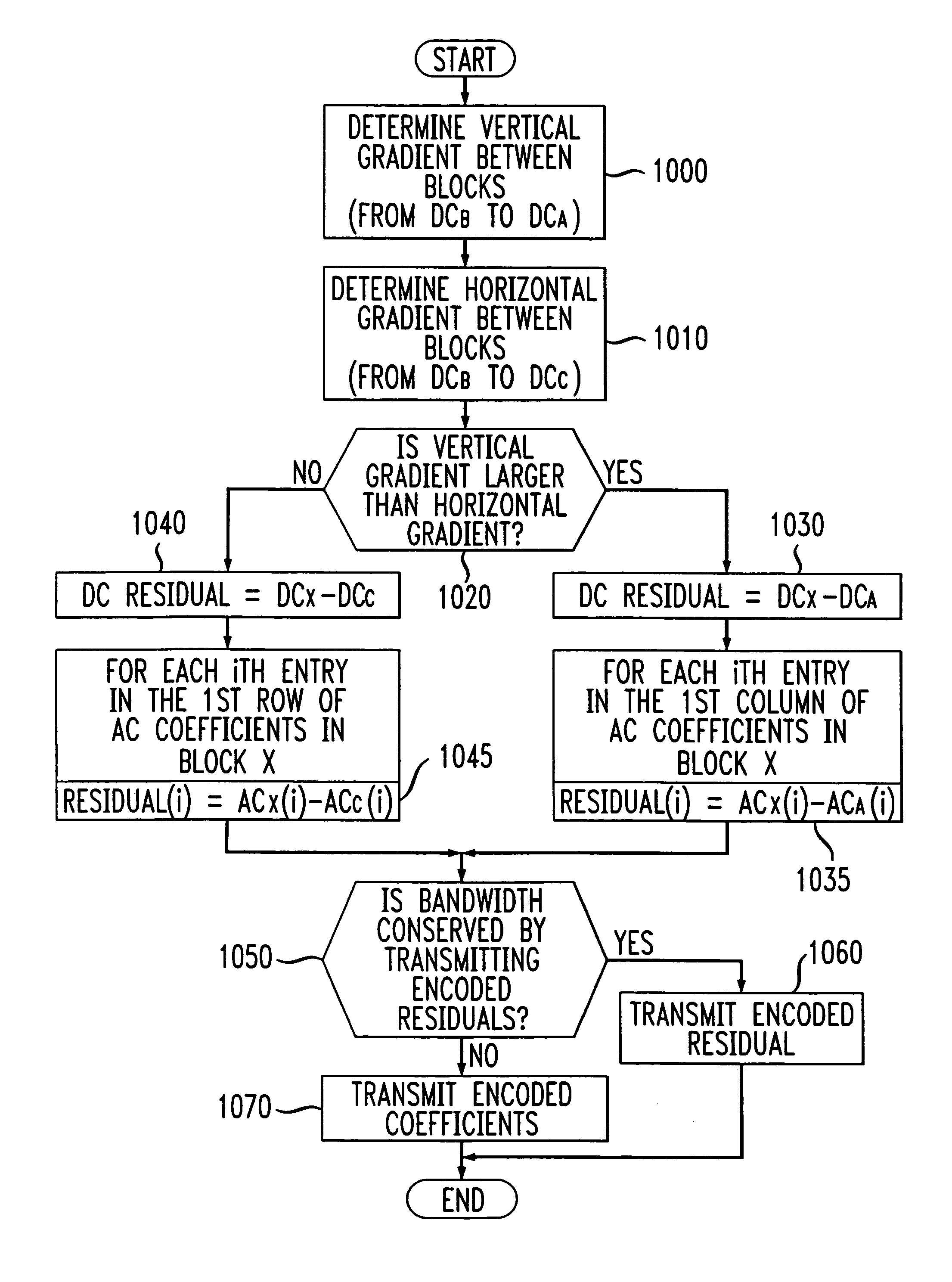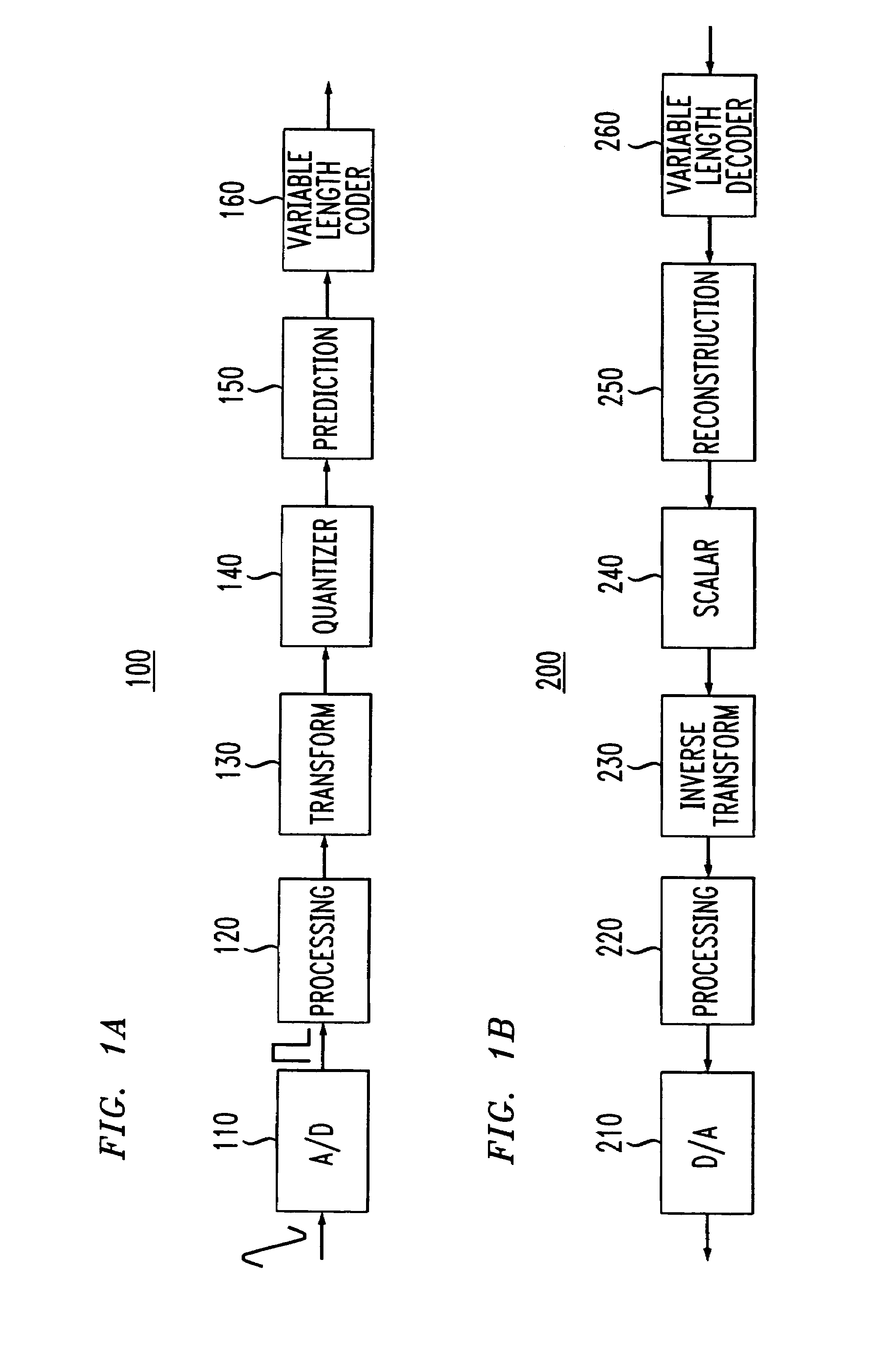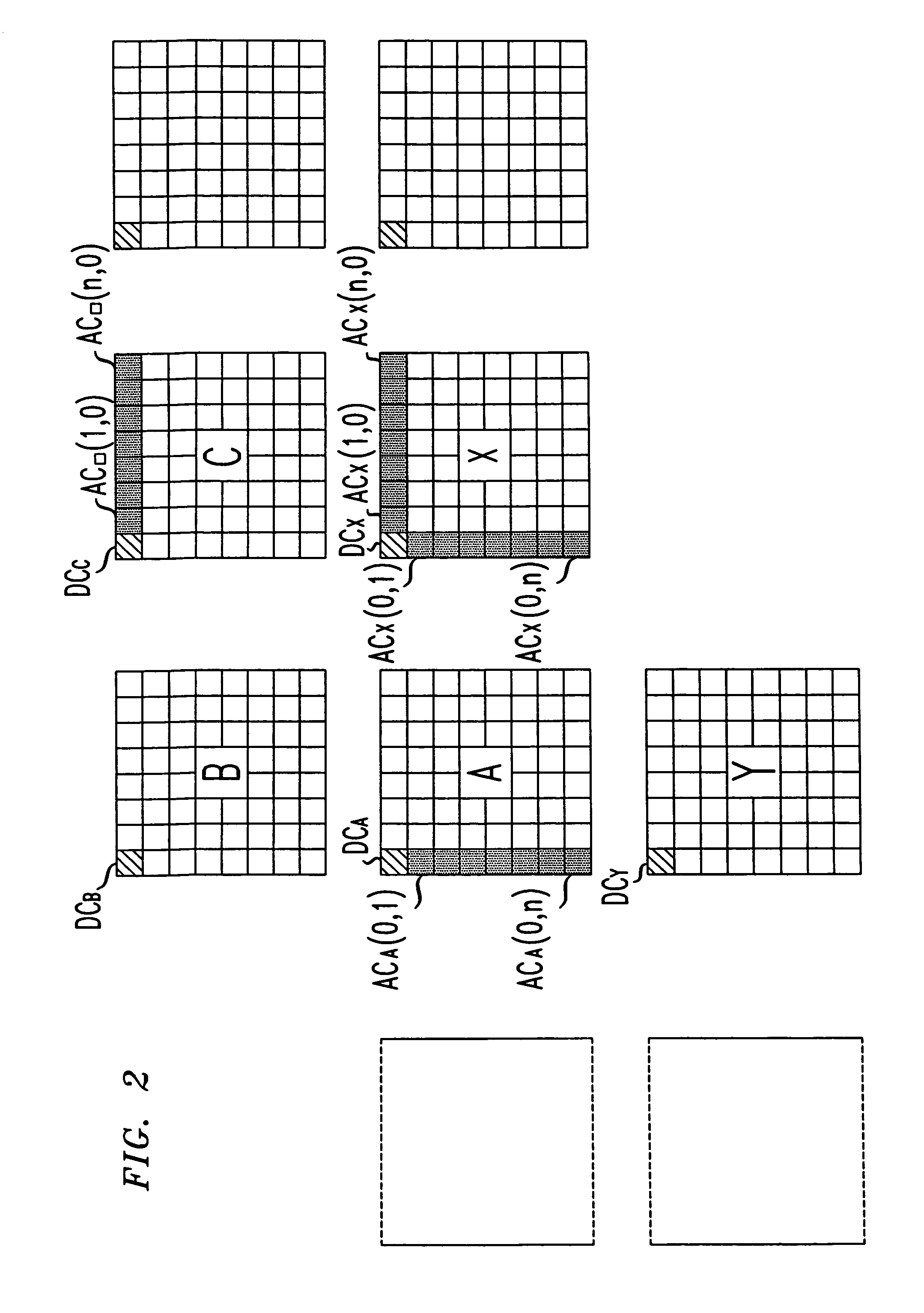Video coder providing implicit coefficient prediction and scan adaptation for image coding and intra coding of video
a video coder and coefficient prediction technology, applied in the field of video coders providing implicit coefficient prediction and scan adaptation for image coding and intra-coded video, can solve problems such as lossless processing
- Summary
- Abstract
- Description
- Claims
- Application Information
AI Technical Summary
Problems solved by technology
Method used
Image
Examples
first embodiment
[0013]FIG. 1 shows an encoder 100 constructed in accordance with the present invention. An analog image signal is presented to the encoder 100. The image signal is sampled and converted to a digital signal by an analog to digital (“A / D”) converter 110 using techniques known in the art. The A / D converter 110 generates a digital image signal for a plurality of pixels of the image. Alternatively, the image signal may be presented to the encoder as a digital image signal; in this case, the A / D converter 110 is omitted.
[0014]The digital image signal is input to a processing circuit 120. The processing circuit 120 may perform a host of functions. Typically, the processing circuit 120 filters the image data and breaks the image data into a luminance signal component and two chrominance signal components. Additionally, the processing circuit 120 groups image data into blocks of data. Where the digital input signal represents information for a plurality of pixels in a scanning direction, the...
second embodiment
[0046]The prediction and reconstruction process described herein is termed an “implicit” method because no overhead signals are required to identify which of the blocks are used for prediction. In operation, coefficient values of blocks A, B and C are known at both the encoder 100 and the decoder 200. Thus, the decoder 200 can reconstruct the prediction operation of the encoder 100 without additional signaling. In an embodiment where the prediction circuit did not select between modes of AC prediction, the AC prediction and reconstruction is purely implicit. With the addition of an AC prediction flag in a second embodiment, the prediction process is no longer purely implicit.
[0047]The encoding / decoding operation of the prediction and reconstruction circuit may also be performed in software by a programmed micro processor or digital signal processor.
[0048]FIG. 5 illustrates the operation of the software implemented prediction circuit. The processor compares the DC coefficient of bloc...
PUM
 Login to View More
Login to View More Abstract
Description
Claims
Application Information
 Login to View More
Login to View More - R&D
- Intellectual Property
- Life Sciences
- Materials
- Tech Scout
- Unparalleled Data Quality
- Higher Quality Content
- 60% Fewer Hallucinations
Browse by: Latest US Patents, China's latest patents, Technical Efficacy Thesaurus, Application Domain, Technology Topic, Popular Technical Reports.
© 2025 PatSnap. All rights reserved.Legal|Privacy policy|Modern Slavery Act Transparency Statement|Sitemap|About US| Contact US: help@patsnap.com



